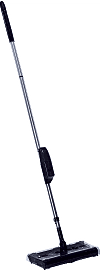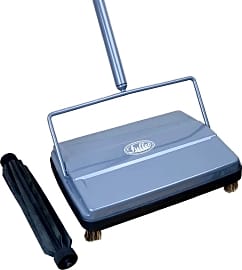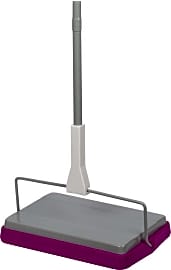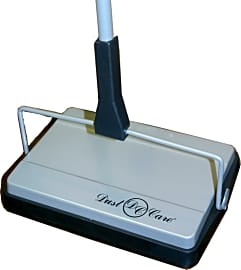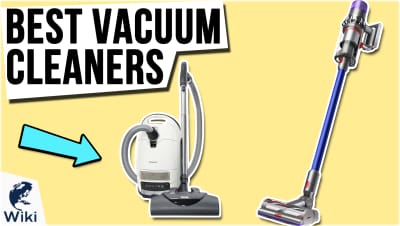The 10 Best Carpet Sweepers

This wiki has been updated 39 times since it was first published in April of 2015. Perfect for in-between cleanings and picking up light messes, carpet sweepers offer a simple approach to tidying up a range of floor surfaces. In addition to homes, the choices on this list are well suited for use in restaurants and retail shops, as they produce little noise and won't disturb customers. They’re handy for keeping your place neat without having to constantly haul out a heavy vacuum. When users buy our independently chosen editorial selections, we may earn commissions to help fund the Wiki.
Editor's Notes
February 13, 2020:
Today we added a couple of reliable models from Bissell to the mix. The Bissell Sweep Up is a force to be reckoned with when it comes to ridding your hard floors and carpets of lint, crumbs, dirt and pet hair, which makes it great for daily use in between larger vacuuming sessions. Its large-capacity dirt pan makes it great for covering lots of ground around your home before having to stop and empty it. Its handle can lie flat, which is convenient when you’re maneuvering it underneath tables, chairs, and desks, as well as for convenient storage. Speaking of which, this one comes with a handy hanging loop, so it won’t take up much space at all in your closet.
The Bissell Turbo 28806 also make its way onto the list today, as a battery-operated model that gives you 60 minutes of use per charge, so it’s convenient for tidying up anytime you feel the need. It remains lightweight, despite having a battery, so it’s comfortable to use without taxing your arms or back. The dirt cup capacity is 480 milliliters, and the rubber wheels glide easily over most surfaces. Each purchase triggers a donation to the Bissell Pet Foundation, which helps care for homeless animals.
The Fuller Brush 17042 also comes on board, and it’s from a company that has been making both household and commercial cleaning products since 1906. Your grandmother may have had a model back in her day, and these have been known for decades for their durable metal housing and poles. This one comes with two rotors: a bristled one for gathering things like pet hair, crumbs, dust, glass, and paper clips, and a smooth, vinyl one for picking up messy food and larger pieces of debris.
Carpet sweepers are convenient since they’re lightweight and don’t take up much storage space. They’re easier for quick daily pickups than dragging out the heavy, loud vacuum cleaner on a frequent basis. If you’re also interested in a lightweight vacuum, be sure to check out our list of best stick vacuums, which are easy to keep close at hand for impromptu spills or other messes, and some even come with convenient docking stations, so they won’t compete for much space in your storage closet.
Special Honors
Tennant T14 Ride-On Carpet Extractor This battery-powered, ride-on extractor helps you clean and dry the carpet of your office or business quickly to reduce the chances of mold and odors that are caused by excess water. It works efficiently to restore your carpets in minutes, so your high-traffic areas always look professional and inviting. It uses two counter-rotating extraction brushes and a vacuum shoe design, and its compact footprint lets you maneuver through congested areas with ease. tennantco.com
What Separates an Average Sweeper From a Great One?
In addition, you'll want a sweeper that features a flexible handle.
Choosing the right sweeper is a matter of paying attention to the details. First and foremost, you want a sweeper to pick up dirt. You want it to pick up stray hairs, fur, and dander, as well. The best way to determine how efficient a sweeper will be is by getting a sense of that sweeper's bristles.
A sweeper's bristles are what it uses to capture dirt and pull that dirt up into a collection bin. That being the case, you'll want a sweeper to feature firm bristles, stacked thickly all the way around the pick-up bar. The more bristles a sweeper has, the more capable that sweeper will be of reaching between a carpet's fibers. At the same time, you'll want to confirm that a sweeper's bristles can be cleaned. In the best-case scenario, a sweeper will allow you to remove its pick-up bar, enabling you to clean the bristles by hand while running them under some water.
A top-of-the-line sweeper should be lightweight enough (e.g., 3-6 lbs.) that you can hang it on a hook, and it should also be compact enough that you can lay it on a shelf. In addition, you'll want a sweeper that features a flexible handle. A static handle may result in you having to push the sweeper at an odd angle, and it may also result in the sweeper failing to maneuver into tight spaces.
It's worth noting that certain sweepers have the ability to steam clean a rug just by adding water. Other sweepers are capable of cleaning up dirt and debris from a variety of surfaces, including linoleum, wood, stone, and tile.
Why Do I Need a Sweeper If I Already Own a Vacuum?
Most people buy a sweeper because it is a quick and efficient alternative to pulling out a vacuum, unraveling its cord, and then dealing with several minutes of that unavoidable noise. Others prefer a sweeper because it works better in a small living space, especially one that features a minor length of rug.
Sweepers are a godsend for anyone who owns a pet, or even shag carpeting, in that a sweeper's bristles can effectively gather up loose shag and fur.
Sweepers are a godsend for anyone who owns a pet, or even shag carpeting, in that a sweeper's bristles can effectively gather up loose shag and fur. Additionally, it's easier to clean a sweeper's bristles than it is to repair a vacuum with a jammed fan or a clogged hose.
Sweepers are not a drain on electricity, nor do they require having to buy any new bags, motors, or filters. Sweepers are lightweight, and they take up very little room. You can place a sweeper behind a coat rack, or you can hang it on a hook inside the pantry. What's more, sweepers have a straightforward disposal system. Remove the tray, and dump it out. No zipping, or pulling. No unexpected dust leaking out all over the floor.
In the final analysis, a sweeper is meant to complement the vacuum, allowing people to keep their vacuums longer, while sparing them the risk of jamming up on a fairly minor job. Perhaps the best way to think of it is this: You run a sweeper when someone calls to say they're stopping by in 20 minutes; you run a vacuum when you're expecting two dozen party guests to show up at your front door later on.
A Brief History of The Sweeper (By Way of Its Founder)
The first carpet sweeper was patented by Melville Bissell of Michigan back in 1876. Upon having his patent approved, Bissell began selling his sweepers door-to-door. Bissell's products proved viable, in large part, because they offered housewives an alternative to beating their carpets against an outdoor rail. Bissell's sweepers were easy to demonstrate inside each customer's home, as well.
Bissell's sweepers were easy to demonstrate inside each customer's home, as well.
Around the turn of the century, Bissell began fulfilling bulk orders from hardware retailers and storeowners. Competition emerged, however, and Bissell responded by experimenting with battery-operated sweepers that were powered by motors. Such advances became a precursor to the modern vacuum - an invention that would eventually supersede the carpet sweeper, while simultaneously enabling Bissell to amass his family's fortune.
Today, the carpet sweeper functions as a natural complement to the vacuum. A lot of people prefer to use a sweeper when dealing with a minor clean-up job involving a cramped space, clumps of pet fur, or concentrated grains of dirt. Certain sweepers can be used on hard surfaces, which is advantageous, given that a sweeper is easier to operate than a broom. In addition, sweepers are inexpensive, which might explain why they remain such a constant presence in the home.





